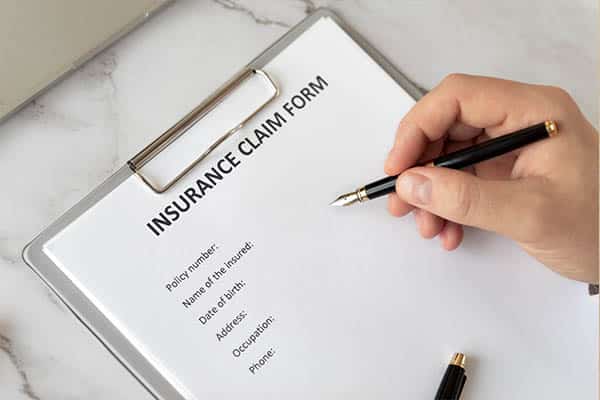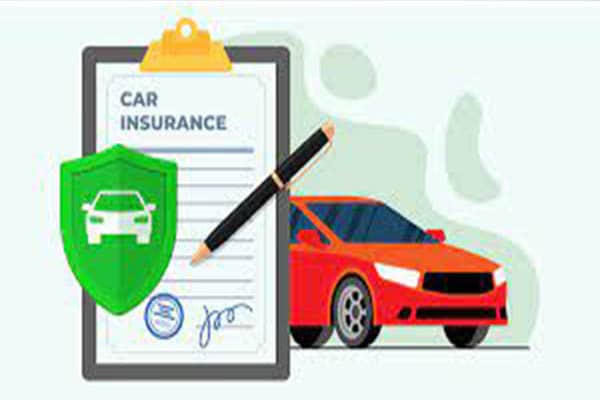Purchasing Auto Insurance is an essential part of owning a vehicle. However, it can be a confusing and overwhelming process to choose the best auto insurance policy for your needs. With so many types of coverage and different rates available, it can be difficult to make the right decision. That’s why it’s important to know the key factors to consider before purchasing auto insurance.
From assessing your budget to understanding the different coverage options, this article will provide you with 10 tips to consider before purchasing auto insurance. With the right knowledge and guidance, you can shop smarter and find the policy that meets your needs and budget.
Purchasing Auto Insurance
1) Assess your budget
Before making any financial decisions, you should make sure that you have a budget in place. You should also know what your current financial obligations are and how much you can afford to pay for insurance. Auto insurance premiums vary widely depending on the factors mentioned below.

By assessing your budget, you can determine the amount you can spend on auto insurance and choose a policy that works within your budget. It’s important to note that your driving history will most likely affect the cost of Purchasing Auto Insurance your premium.
2) Understand the different types of coverage
There are three main types of coverage to consider when purchasing auto insurance. This includes Liability Coverage, Uninsured/underinsured motorist coverage, and collision/comprehensive coverage. Liability Coverage – Liability coverage pays for the cost of any damage that you cause to another person or their property. Liability coverage comes with a standard amount of $250,000 per person and $500,000 per accident. Many states also require drivers to have $25,000 per accident in medical payments coverage.

This coverage pays for the medical costs of any Purchasing Auto Insurance passengers who are injured in a car accident. Uninsured/underinsured motorist coverage – This coverage provides protection against drivers who are uninsured or underinsured. If you are in an accident with an uninsured driver, then your policy will cover any medical and property damage costs. If you are in an accident with an underinsured driver Purchasing Auto Insurance, then this type of coverage will cover any additional costs of repairing your car. Collision/comprehensive coverage – This coverage protects your car from damage caused by collision or vandalism. It also provides coverage for weather damage, such as hail. If you are financing your car, then collision coverage is required.
3) Research your options
When it comes to auto insurance, there are many factors that go into the price of your policy. The specific factors vary depending on the company you choose and your driving record. The following are some of the most common factors that affect auto insurance rates. Age – The younger you are, the more expensive your policy will be. This is because young drivers are considered high-risk and are more likely to get into accidents. Gender – Women drivers are typically charged less than men. This is because women are less likely to get into accidents than men. Your car’s make and model – Certain cars are more expensive to insure than others.

This is based on the likelihood of your car being involved in an accident. Luxury and sports cars are some of the most expensive types of vehicles to insure. Smaller cars that are fuel efficient, such as hybrid and electric cars, are usually less expensive to insure. Your driving record – A clean driving record will lower your rates while a poor driving record will increase them. If you have a poor driving record, you might need to shop around for higher risk auto insurance companies. You may also want to consider taking a defensive driving course to improve your record.
4) Compare quotes
Once you decide on the coverage options you want, it’s time to start comparing quotes. When comparing quotes, you need to make sure that you’re comparing apples to apples. This means that you should only be comparing quotes from companies that offer the same coverage types. If a company offers a policy with different coverage types, you’ll need to compare quotes for each coverage type.

Meanwhile, it’s good to keep in mind that not all insurance companies are created equal. When it comes to comparing quotes, it’s important to look for reputable companies with good customer service. The last thing you want is to get in an accident and have a fly-by-night company refuse to pay your claim.
5) Insurance claim form
One thing to keep in mind when comparing quotes is to know the coverage limits for each type of coverage. While most policies will provide the minimum amount of coverage required by law, there may be situations where higher coverage is needed. It’s important to understand what each coverage type is designed to cover.

For example, collision coverage only covers damages to your car. It won’t cover damages to other people’s cars or injuries that result from an accident. It’s important to understand the limitations of each coverage type and when you may need additional coverage.
6) Check for discounts
While premiums are important to consider when purchasing auto insurance, so are discounts. Many insurance companies offer discounts to drivers who qualify. It’s important to know what discounts you qualify for and to enter them into your quote. These discounts can help lower the cost of your premium significantly. Some of the most common discounts are as follows: Good driver discount – If you have a clean driving record, you may qualify for a good driver discount. This discount can help reduce your rates significantly.

Multiple policy discount – If you have multiple policies with the same insurance company, such as homeowners insurance, you may qualify for a multiple policy discount. Raising your deductible – Increasing your deductible by $50 or $100 can significantly lower your premium. Keep in mind that raising your deductible means that you’ll have to pay out of pocket for minor damages and repairs.
7) Consider the company’s customer service
When comparing quotes, you should also make sure to look at the company’s customer service record. This can give you an idea of how responsive the company is when you have questions or need assistance. Ideally, you want to choose an insurance company that offers 24/7 customer service and has a good track record for resolving issues quickly.

It’s also important to look for a company that offers multiple ways to contact them. Many insurance companies offer online chat and phone support. This can make it easier for you to get in touch with a representative when needed. It’s also a good idea to check the company’s social media pages. You can get an idea of how quickly they respond. You can also see if other customers have posted any complaints or compliments.
8) Read the fine print
Before you sign on the dotted line and purchase auto insurance, it’s important to read the fine print. This is the part of the policy that is written in very small font and is often overlooked. This is where you’ll find important information, such as your policy’s cancellation and penalty information, payment due dates, and the details of your coverage.

It’s important to make sure that everything in the fine print matches what you expect from the policy. If you have any questions, it’s a good idea to call the insurance company and ask. It’s also a good idea to bring someone who understands insurance, such as a friend or family member, with you to read over the fine print.
9) Look for additional coverage
As mentioned, collision and comprehensive coverage are required if you are financing your car. However, it’s also good to consider additional coverage, such as medical payments coverage, uninsured/underinsured motorist coverage, and life insurance. Additional coverage, such as medical payments coverage, can help cover the cost of injuries sustained in an accident.

If you or a passenger are injured in an accident, medical payments coverage will cover the cost of medical care if the other driver is at fault. Uninsured/underinsured motorist coverage is also important to consider if you are financing your car. This type of coverage protects you against drivers who are uninsured or underinsured. If you are hit by a driver who is at fault, but they don’t have enough coverage to cover your expenses, this coverage will protect you.
10) Know the coverage limits
Knowing the coverage limits of your insurance policy is key to making sure you’re adequately protected. Before you purchase an insurance policy, it’s important to understand exactly what is and isn’t covered. This way, you can make sure you know what situations you’re protected in and which ones you’re not. Additionally, knowing the coverage limits of your policy can help you compare policies and make sure you’re getting the most coverage for your money. Many policies have different levels of coverage and it’s important to understand what each one entails.

For instance, some policies may offer protection against theft or damage, while others may only cover certain types of losses or damage. Knowing the coverage limits of your policy can also help you determine whether or not you need additional coverage. For example, if you have a high-value item, you may want to purchase additional coverage to protect it. By understanding the coverage limits of your policy, you can make sure you are getting the best protection for your money.
Also Read- The 3 Most Important Factors That Determine Your Car Insurance Rate




